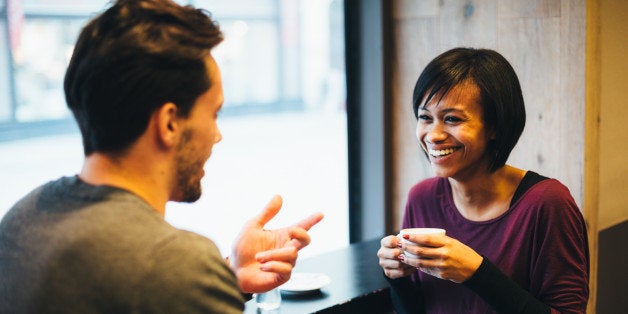
(Co-authored by Professor Helen Kim, co-author of JewAsian and Huffington Post blogger)
In June 1958, Richard Loving and Mildred Jeter, a White man and a Black and Native American woman very much in love with each other, were married in Washington, D.C. where interracial marriage was legal. Shortly after returning to their home in Caroline County, Virginia, however, the couple was arrested and charged with violating their state's Racial Integrity Act of 1924 which made interracial marriage illegal.
To avoid jail, Richard and Mildred agreed to leave Virginia and return to Washington. Yet, they always longed to be with family and friends in Caroline County. In 1963, the Lovings, with help from the ACLU, set out on the road back home to Virginia via a long detour through the United States legal system. Finally, in 1967, the U.S. Supreme Court ruled race-based legal restrictions on marriage to be unconstitutional, ending hundreds of years of anti-miscegenation laws across the nation.
Nearly 50 years later, the impact of Loving on interracial love and marriage cannot be overemphasized. Ultimately, the decision upheld the larger claim that love between two people who are from different backgrounds, whether racial, ethnic, or otherwise, must be recognized and accepted by the law as well as by society more generally.
These days, that recognition often seems to carry with it a kind of victory lap sentiment, as if the presence of mixed-race couples or families in a neighborhood or school somehow proves that all is well with race in America. As perhaps one example of this generalized optimism, since 2004 hundreds of events celebrating interracial intimate partnerships have taken place on June 12, the anniversary of the Court's decision, which has come to be known as Loving Day.
This Loving Day - the final one during the administration of America's first mixed-race President - is especially poignant for the two of us as we witness increasing public and scholarly attention on interracial families and multiracial children born to these marriages, even including within the American Jewish community.
Last month in New York City, the first Jews of Color National Convening shed a bright spotlight on the misunderstanding and marginalization of Jews from racial and ethnic backgrounds who don't code as white.
The spirit behind the National Convening heartens us as it reinforces some of our own findings from a recent analysis of American families that include interracial parents and multiracial children. Our research on couples in which one partner is racially Asian of any religious background and the other partner is Jewish of any racial background, as well as on adult millennial children born to these kinds of marriages, illustrates the growing pains of Loving in an American society with a rapidly increasing diverse population and whose rates of interracial marriage are significantly on the rise.
Troublingly, though, and also surprisingly, as we interviewed families we began hearing stories of JewAsian couples and especially their adult children being regarded skeptically and sometimes even rejected by their communities and communal organizations because of their mixed-race identities. Often times, questions and challenges to Jewish authenticity such as "Funny - you don't look Jewish!" or "Oh, you mean you're half Jewish!" were posed to our respondents by Jews and non-Jews alike in racially diverse communities and also in Jewish spaces like synagogues and day schools.
Rather than cower, though, these young people often, and admirably, challenged their detractors' misconceptions while simultaneously affirming their own multiracial and Jewish identities. One of our interviewees told us, "It's confusing to people. They wonder - 'are you really Jewish or are you just kind of Jewish?' I felt like I had to be even more Jewish in order to compensate for that kind of skepticism."
Perhaps we should not have been surprised by stories like this. During the years that we conducted our interviews, America came face to face with the spillover of our centuries-old racial hierarchy through traumas like the frequent police shootings of unarmed people of color and the Black Lives Matter campaign and campus protests calling for greater inclusion of historically underrepresented minority students. Indeed, the young mixed-race Jews we interviewed recounted their involvement in these very social movements. They told us their participation was a direct result of their experiences grappling with their complex racial identities which they said afforded them deep empathy with other racial and ethnic minorities, regardless of any religious differences.
Our research helped us understand that the best way we can honor Mildred and Richard Loving today is to both revel in the expanded possibilities that the Supreme Court created in their case and also to maintain vigilance. We cannot simply applaud the reality of interracial or interreligious households but rather we must work hard to open the conversation about America's diverse population even wider to be able to include, respect, and perhaps even love, everyone.